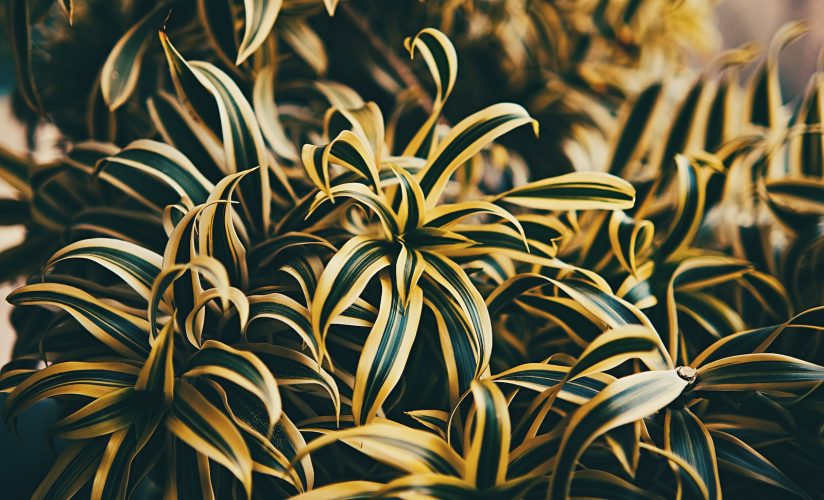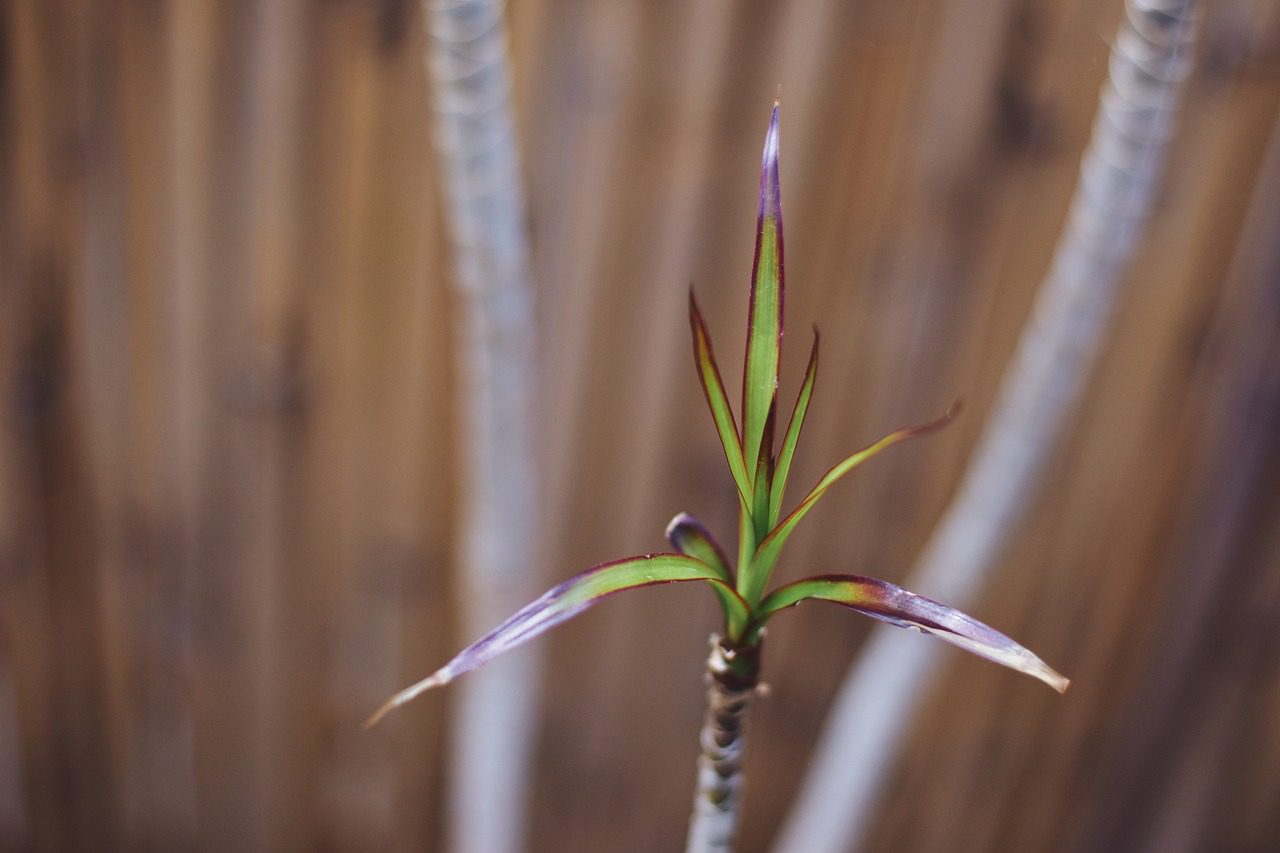Adding houseplants to your home is a terrific way to bring color, freshness, and vitality into your space.
For good reason, dracaena plants are among the most popular houseplants in the world. They are durable, low-maintenance, and come in a wide range of lovely shapes and sizes. If you like dracaena plants, you might want to try propagating them to make more plants for your home or to share with friends and family.
Propagating dracaena plants may appear daunting at first, but with the correct tools and procedures, you can easily multiply one plant into several.
We’ll walk you through the steps of reproducing your dracaena plants like a pro in this post. We’ve got you covered every step of the way, from selecting the correct cuttings and soil to caring for your new plants.
So let’s get started on learning how to propagate dracaena plants!
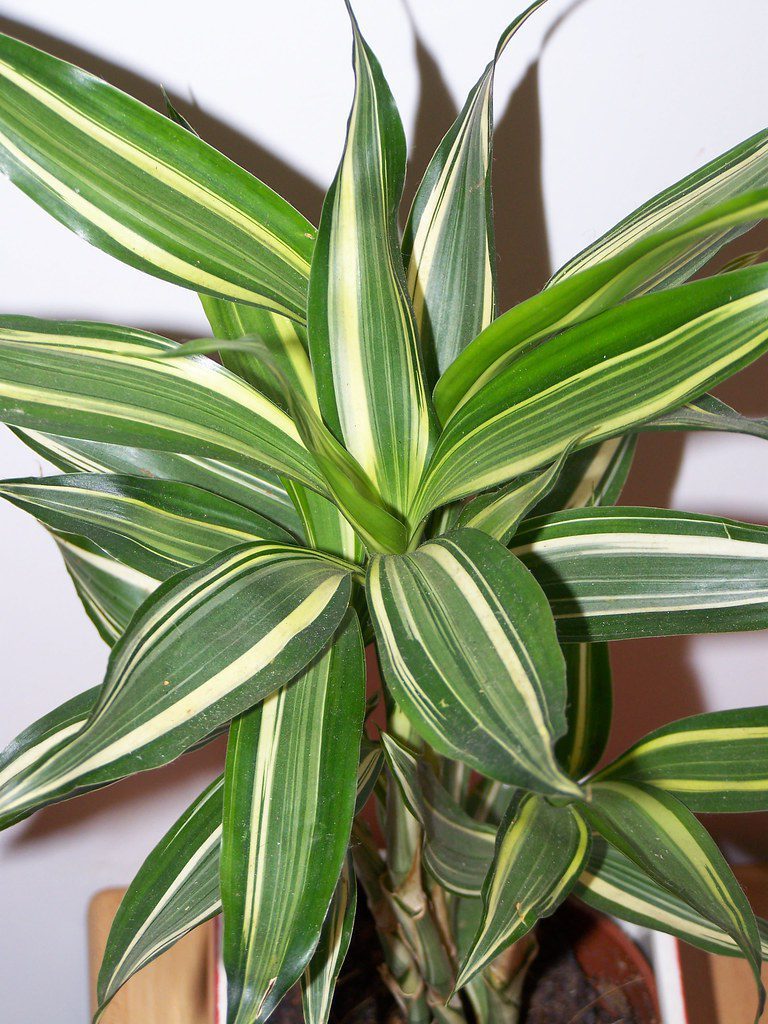
Introduction to Dracaena plants
Contents
- Introduction to Dracaena plants
- Tools and materials needed for propagating Dracaena plants
- A Guide to Dracaena Propagation
- When is the Best Time to Propagate Dracaena?
- Why propagate Dracaena plants?
- Troubleshooting problems with propagated Dracaena plants
- Common mistakes to avoid when propagating Dracaena plants
- Tips to Take Care of Newly Potted Dracaena
- FAQs Dracaena Propagation
- How to take cuttings for Dracaena Propagation?
- Can you propagate Dracaena when it gets root bound?
- Can you grow dracaena from cuttings?
- Can you propagate dracaena in water?
- Can you propagate a dracaena from a leaf?
- Is it better to propagate dracaena in water or soil?
- Where do you cut a dracaena stem?
- Will dracaena stem grow back?
- How do you fix a leggy Dracena?
- How do you stimulate dracaena growth?
- Conlusion
Dracaena plants are a popular choice for both indoor and outdoor gardeners. They are simple to maintain and have a distinct appearance, making them an excellent accent to any environment.
Dracaena plants are native to Africa, Madagascar, and southern Asia and are members of the Asparagaceae family.
They range in size and shape from small houseplants to gigantic trees that can grow to be 50 feet tall. Dracaena marginata, Dracaena fragrans, and Dracaena reflexa are the most popular types.
The ability of Dracaena plants to filter the air is one of the reasons they are so popular. Toxins like benzene, formaldehyde, and trichloroethylene are known to be removed from the air by them.
Dracaena plants can also adapt to a variety of light situations, making them an excellent choice for any environment.
Dracaena plants are a terrific choice for bringing a touch of green to your home or yard, whether you are new to gardening or have years of experience.
No products found.
Tools and materials needed for propagating Dracaena plants
For any plant enthusiast, propagating Dracaena plants may be a pleasant and gratifying activity. Before beginning the process, be certain that you have all of the necessary tools and materials. Here’s a list of what you’ll need:
1. Pruning shears: A nice sharp set of pruning shears will make clean cuts on the parent plant easier.
2. Rooting hormone: Rooting hormone is a powder that aids in the stimulation of root development on new cuttings. Rooting hormone is available at your local garden center or online.
3. Potting mix: For roots the new cutting, a well-draining potting mix is essential. You can buy a ready-made mixture or make your own by combining equal amounts perlite, peat moss, and vermiculite.
4. Containers: To plant your new cuttings, you’ll need small containers or pots. To prevent root rot, make sure the containers have drainage holes.
5. Clear plastic bags: Clear plastic bags will assist your new cuttings root by creating a humid environment. Any clear plastic bag, such as a sandwich bag or plastic wrap, would suffice.
6. Watering can or misting bottle: A watering can or misting bottle will be required to keep the potting mix moist while the new cutting roots. By having all of these tools and ingredients on hand, you will be able to successfully reproduce your Dracaena plants.
A Guide to Dracaena Propagation
To grow Dracaena successfully, pick healthy top or stem cuttings or choose a robust stem for air-layering.
For air-layering, you do not need to cut your Dracaena mother plant, but you must secure a proper incision site for stem or top cuttings.
To obtain Dracaena cuttings, make clean cuts at the appropriate spots on the stem, usually a few inches below the leaf node.
Furthermore, when their leaves are brown and dropping, it is preferable to propagate them, as cuttings made from ill plants may not have a high probability of survival.
Furthermore, top cuttings are shorter than stem cuttings but root faster, whereas stem cuttings may take a little longer to root.
To speed up the growth of the cuttings, root them in water and then transplant them into suitable soil.
Dracaena seeds can be used to establish a healthy plant, but they take longer to germinate and may be unviable, therefore propagating via cuttings is the more dependable alternative.
Dracaena Propagation from Cuttings – Top Cuttings
Top cuttings from the parent plant are a way of propagating new plants in which a piece of the parent’s stem is cut off and rooted in soil or water. This is a popular strategy.
This is accomplished by making a cut below the plant’s leaf line, ensuring that multiple nodes of the stem are included.
After that, the cuttings can be placed in either a container filled with moist soil or a vase filled with clean water.
If the latter option is chosen, roots will grow in a relatively short period of time.
Once the cuttings have grown roots, they should be potted in a container.
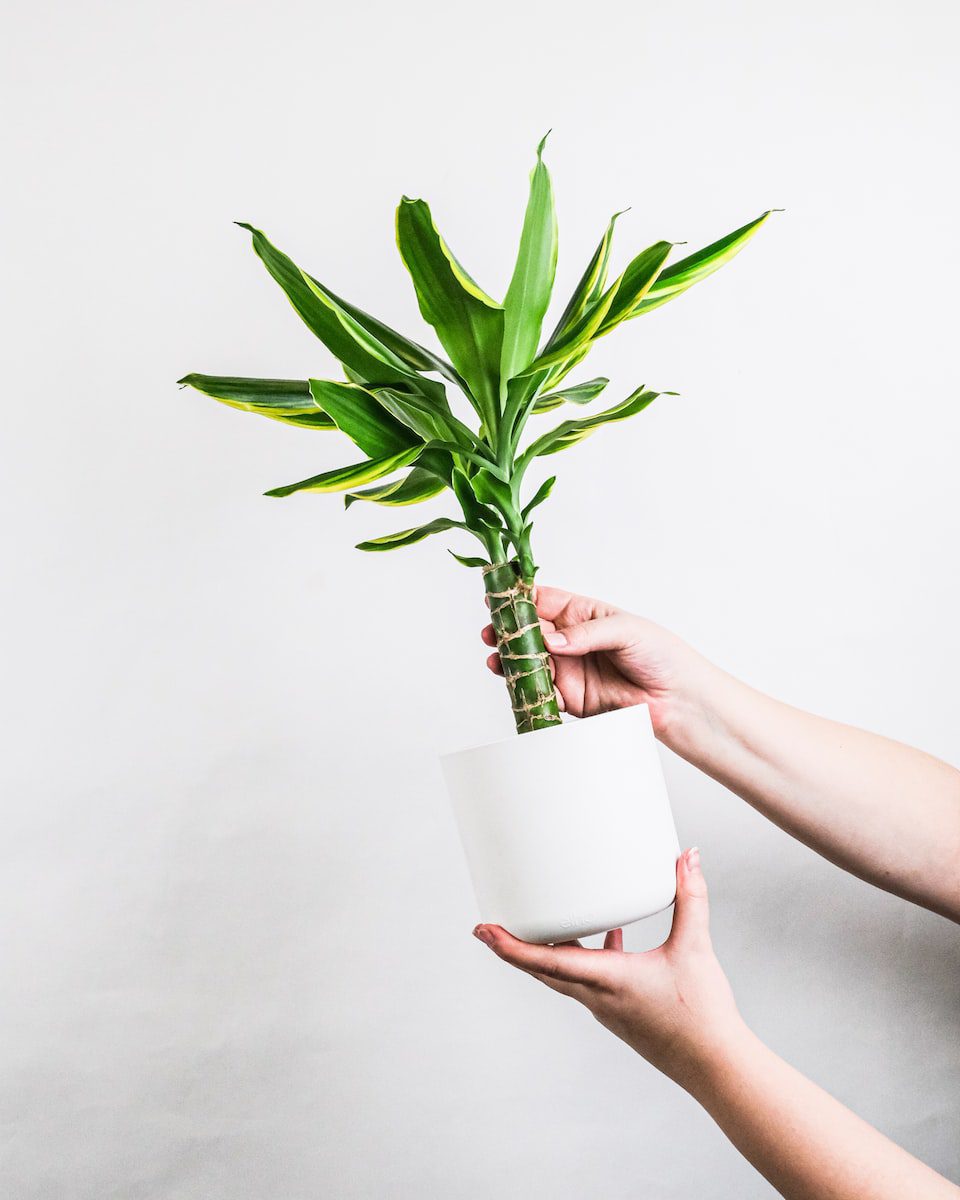
Dracaena Propagation in Water
Dracaena cuttings root quickly in water, but the roots are weak and require a few weeks of hardening before transplantation in soil.
Placing Dracaena cuttings in a clean jar filled with rooting hormone solution, with the leaves flaring out from the water, is a quick and successful approach to proliferate.
The jar should be placed near an east-facing window in an area with dappled sunshine, at a temperature of 50-75°F and humidity of 40-50 percent.
Every 3-5 days, or whenever the water becomes murky, the water should be replaced.
After 2-8 weeks, the cuttings should form a bundle of creamy white roots from the nodes at the cut end that is at least 5 cm long before transplanting into soil.
Dracaena Propagation in Soil
Following these methods, plant the rooted Dracaena cutting in soil.
To propagate the rooted Dracaena cutting in soil, fill a 6-inch wide terracotta planter one-third full with a fluffy potting mix.
The cuttings should then be pressed into the soil around half an inch to an inch deep.
The soil should be well hydrated, with the top layer remaining damp but not soggy.
After the cuttings have grown to about 2-5 inches in length and are robust enough to sustain the plant’s upward growth, they should be rooted in soil.
The topsoil should be sprinkled with a thin layer of dry compost.
Gently pluck on the cuttings once a week to ensure that the roots have hardened enough to support the plant.
After about a month, the roots should be strong enough to maintain the plant with normal care.
Dracaena Propagation from Air Layering – Stem Cuttings
This method tricks your Dracaena plant into creating roots on its stem and later propagating it.
In order to successfully propagate a Dracaena plant, one must carefully follow these steps.
Utilizing a sterilized blade, scrape away a 1/2-inch wide layer into a healthy stem.
Subsequently, sprinkle rooting hormone on the wound, wrap wet sphagnum moss around the cut, and firmly secure it with a plastic wrap and thread.
Following this, you must patiently wait in order to observe the development of new roots within the plastic wrap.
When these roots start to become visible, gently remove the wrap and cut the stem directly beneath the rooted part.
This portion can then be potted in a well-draining soil and set-up in bright indirect sunlight with favorable temperature and humidity for the plant. In some cases, the foliage may contain yellow leaves at the base of the head. These can be removed and the stem may need to be recut accordingly.
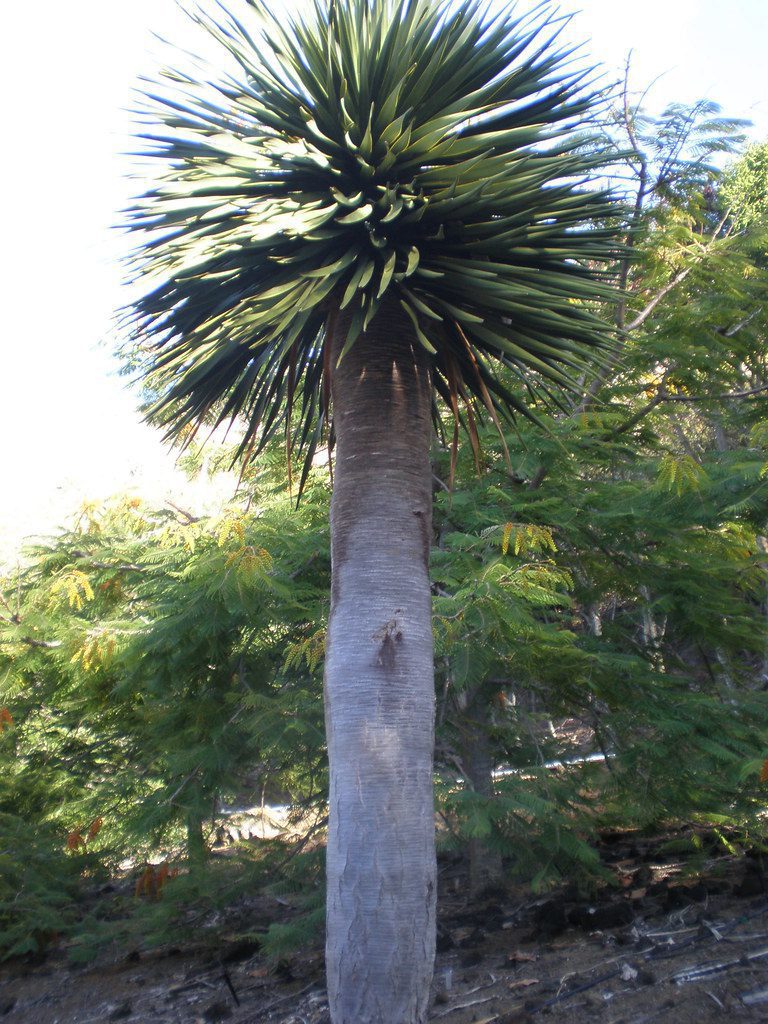
When is the Best Time to Propagate Dracaena?
Dracaena is a tropical evergreen plant that grows vigorously in the spring and summer but remains dormant in the fall and winter.
As a result, when the plant is actively growing, the optimal time to begin propagation is in the spring or early summer.
Dracaena cuttings can be taken during spring or summer pruning and propagated in the fall or winter, albeit this may result in delayed growth of the cuttings and a few complications during the propagation process. These cuttings can withstand low moisture levels and are simple to produce as houseplants.
In the spring and summer, cutting the plant allows the mother plant to heal.
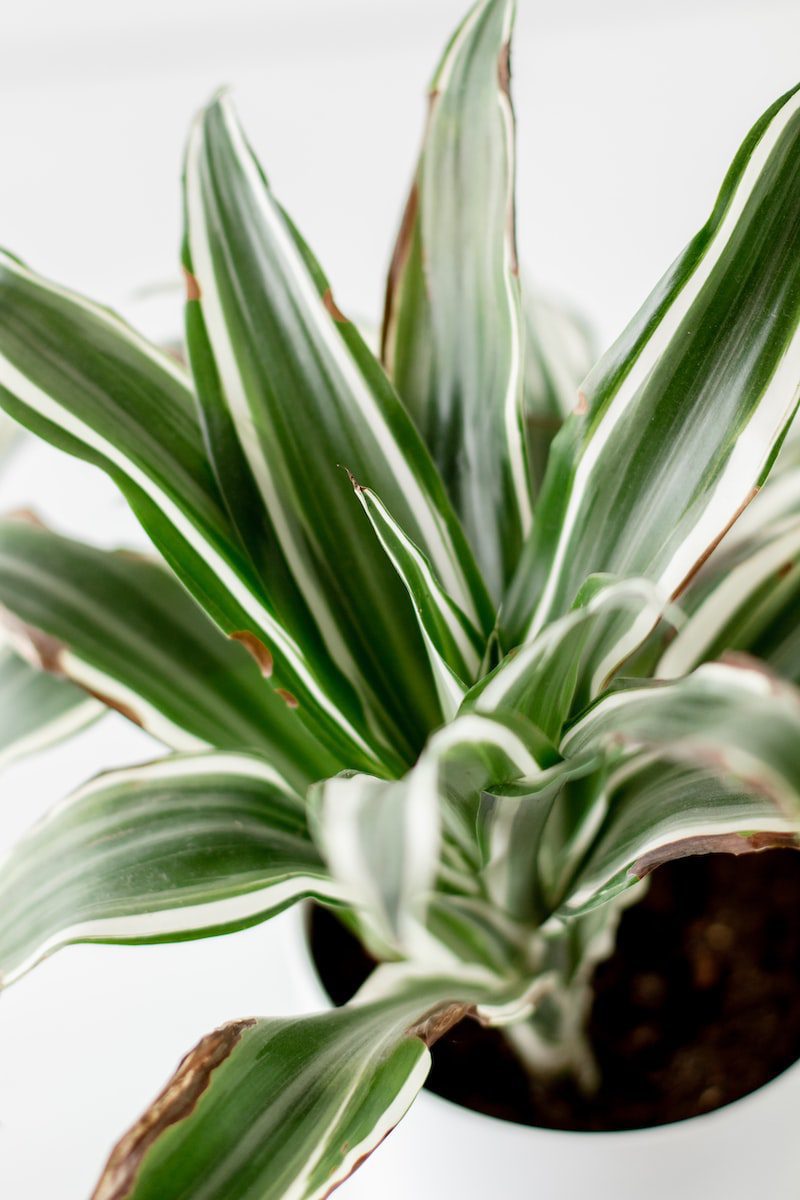
Why propagate Dracaena plants?
There are various reasons why Dracaena plant propagation can benefit both plant hobbyists and business farmers.
To begin with, propagating your own plants can help you save money by eliminating the need to purchase new plants every time you wish to add to your collection or replace old ones. Furthermore, plant propagation may be a pleasant and gratifying hobby that allows you to experiment with numerous approaches and build personalized arrangements that suit your personal taste and style. Propagating Dracaena plants can be an effective technique for commercial producers to boost production and meet demand. Growers can simply propagate their existing inventory to generate more plants and suit the needs of their consumers rather than relying on outside sources or purchasing new plants.
Propagation can also assist producers in maintaining plant quality and consistency by ensuring that young plants are genetically identical to their parent plants, resulting in a more consistent and trustworthy product.
Furthermore, growing Dracaena plants can aid in the preservation of uncommon or odd types that are not generally available on the market. Plant lovers and gardeners can assist to preserve genetic variety and prevent the extinction of rare or valuable plant species by propagating these plants.
Overall, propagating Dracaena plants can be a rewarding and practical approach to enhance output, grow your plant collection, and preserve rare or odd kinds.
Troubleshooting problems with propagated Dracaena plants
Propagation is a terrific way to grow your Dracaena plant collection, but it can go wrong. You should be aware of a few frequent issues that can develop when propagating Dracaena plants.
One typical problem is root rot, which occurs when the plant’s roots become soggy and begin to decompose. This might occur if you overwater your propagating Dracaena or if the soil mix is too heavy and prevents proper drainage. To avoid this issue, use a well-draining soil mix and only water your plant when the top inch of soil is dry. Leaf drop is another issue you may encounter. This can happen if the plant doesn’t get enough light or the air is too dry.
Make sure your propagating Dracaena gets enough light, and consider using a humidifier to keep the air around the plant moist. Brown stains on the leaves of your propagated Dracaena may appear in some circumstances.
A fungal infection can cause this, which can be treated with a fungicide. To prevent the spread of the fungus, carefully follow the instructions on the fungicide and consider removing any affected leaves.
Finally, it is critical to be on the lookout for pests. Pests that commonly harm Dracaena plants include spider mites and mealybugs. If you observe any signs of infestation, such as webbing or tiny white insects on the leaves, use an insecticide or a natural cure, such as rubbing alcohol or neem oil. You can guarantee that your propagated Dracaena plants thrive and continue to provide beauty to your home or business by being aware of these common concerns and taking steps to prevent them.
Dracaena Transplant Shock
Transplant shock is a major issue when transplanting or propagating houseplants. This occurs when the plant is stressed as a result of being transferred, and it might result in the plant dying. To avoid this, use caution while transplanting your houseplants.
Here are some pointers to avoid transplant shock:
Before transplanting, thoroughly water the plant. This will aid in keeping the plant hydrated and stress-free.
Planting or propagation should be done in the morning or evening. Avoid transplanting in the middle of the day, when the sun is the brightest. This is more of a precaution than a proven explanation for plants not proliferating or taking transplants well.
When transplanting or propagating, take care not to injure the roots or the stem (more than required for the cutting itself).
Fill the new planting hole with organic stuff. This will assist the plant in settling down and reducing stress.
Common mistakes to avoid when propagating Dracaena plants
While growing Dracaena plants can be a fun and rewarding activity, there are a few typical pitfalls to avoid.
The first error is not making your cuts with a clean, sharp tool. Using a dull or filthy tool can bring harmful bacteria or other pathogens into your plant, causing sickness or even death. To make your cuttings, make sure to use a clean, sharp pair of scissors or pruning shears.
Another common blunder is not allowing your cuttings to callus before planting them. This is a critical step because it allows the cut end of the stem to dry and build a protective coating over the wound.
Planting your cuttings too soon may make them more prone to disease or decay. Another common blunder is overwatering your cuttings. While it is critical to keep your cuttings moist, they do not require the same amount of water as a mature plant.
Overwatering can cause root rot and other fungal infections, both of which can destroy your cuttings. Finally, failing to provide enough light for your cuttings can be a mistake.
While they do not require direct sunshine to grow, they do require bright, indirect light. If you don’t give your cuttings adequate light, they will become weak and leggy, making it difficult for them to root and flourish.
You can improve your chances of success while propagating Dracaena plants by avoiding these frequent blunders. You may turn one plant into several and enjoy beautiful, healthy plants throughout your home with a little patience and care.
Tips to Take Care of Newly Potted Dracaena
It is vital to supply Dracaena plants with the necessary tropical care following propagation to achieve optimal growth and development.
This involves exposing the plant to 2-4 hours of eastern sun every day or positioning it 3-5 feet away from a south-facing window.
To maintain ideal soil moisture, water the soil every 1-2 weeks in the spring and summer, and let it dry between waterings in the fall and winter.
Furthermore, the plants should be kept in an environment with a temperature of 50-75°F and a humidity level of 40-50 percent.
The plant should be repotted every 1-2 years into a terracotta container that is 2-3 inches wider and deeper than the previous one.
The fresh soil should be a 1/3rd mix of compost or fine bark chips, peat moss, and organic perlite.
Furthermore, beginning 2 months after propagation, the plant should be fed a balanced liquid feed every 2-8 weeks in spring and summer. To avoid fertilizer burns, examine the light needs or inspect the sunshine intensity for the plant and avoid fertilizing in the winter.
Finally, in the spring and summer, grooming should be done to remove dead leaves or blooming stems, and neem oil sprays should be used to deter pests (thrips, mites, mealybugs, and scales) and diseases (blights, spots, and rots).
FAQs Dracaena Propagation
How to take cuttings for Dracaena Propagation?
Dracaena cuttings can be propagated by clipping the stems or top of the plant at a 45° angle during the spring or summer seasons.
Can you propagate Dracaena when it gets root bound?
Root bounding provides an opportunity to transplant the plant into a new pot, from which one can carefully choose and rescue some healthy cuttings from the original plant.
Can you grow dracaena from cuttings?
Water-rooting dracaena cuttings is an excellent approach to reproduce your plant. You’ll need a container with no drainage holes, such as a mason jar, to perform this. Fill the container halfway with water and immerse the cutting until the bottom of the stem is submerged. To keep the water fresh, change it every few days. Wait a few weeks for the roots to grow to an inch in length. When the roots are mature, move the cutting to a new container. The roots should be strong enough to hold the plant in its new container.
Can you propagate dracaena in water?
To propagate a plant from a cutting, make a clean cut below the plant’s leaf line, including multiple nodes of the plant’s stem. It is critical to make the cut using a sharp, sterile blade to prevent the possibility of infection or plant damage. Cuttings can then be planted in a moist soil-filled container or placed in a vase of clean water. Cuttings produced in water take minimal time to establish roots and can typically be put straight in the soil after only a few weeks. It is critical to maintain the soil or water moist and allow plenty of space for successful proliferation.
Can you propagate a dracaena from a leaf?
To propagate a plant cutting, make a cut slightly below the clump of leaves at the top of the plant. Make sure you get at least one node – the section of the stem to which the leaves are linked. Then, put the cut end of the stem in a glass of water and keep it somewhere warm. As long as you keep it warm, the roots should develop from the stem within a few days. Plant the cutting in soil when the roots have developed between one and two inches (2.5 to 5 cm).
Is it better to propagate dracaena in water or soil?
Air layering is the most efficient method for propagating Dracaena, followed by rooting in soil and then taking stem cuttings and rooting them in water.
Where do you cut a dracaena stem?
The lower half of the cut stalk of Dracaena How much stem should be left on the plant’s bottom? At least 2 inches (5cm), although you can leave much more if you choose. Keep any extra stem pieces and cut them into 6-inch (15-cm) pieces to make cuttings alongside the highest part.
Will dracaena stem grow back?
Taking a cutting from a dracaena is a simple procedure. The dracaena plant is entirely beheaded by cutting it at the base of the stem where it joins the soil. This may appear to be an extreme measure, but don’t worry: the parent dracaena will grow back as long as you continue to provide regular care and upkeep. Next, put the slice into a rooting hormone to encourage root formation. Place the clipping in a large pot.
How do you fix a leggy Dracena?
At this point, the only thing you can do to revive your plant (and I know it’s difficult) is to cut off the top two-thirds of the stem. The bottom section of the pot will sprout new shoots and grow bushier and stronger. Remember that because the plant is smaller today, it will require less water.
How do you stimulate dracaena growth?
Indoors, grow dracaena in bright, indirect light. Most types can handle low light levels, however moving plants to brighter settings will result in faster growth. However, do not place them in direct sunlight, since the leaves may scorch.
During the growing season, fertilize dracaena every two to three weeks. Use a balanced, water-soluble fertilizer developed exclusively for houseplants. For proper application rates, follow the instructions on the packaging.
Conlusion
It is imperative that Dracaena cuttings that are rooted in water are exposed to fresh air daily in order to prevent the onset of decay due to excessive humidity.
If the cuttings are enclosed in a humidity dome or plastic wrap, this will create an environment with excessive humidity which will cause the transplants to deteriorate.
Dracaena plants are a great choice for low-maintenance houseplants that thrive. Cuttings can be taken from the mother plant and rooted in soil or water for 2-8 weeks. The best time to propagate is in the spring or early summer. When planting, the soil should be moist, and the plant should be in bright, indirect light. Pot the plant in a terracotta planter, water it every 1-2 weeks, and feed it every 2-8 weeks. Air layering can also be used to propagate Dracaena. To fix a leggy Dracaena, cut off the top 2/3rds of the stem and the bottom section will send out new shoots and become bushier and stronger.
